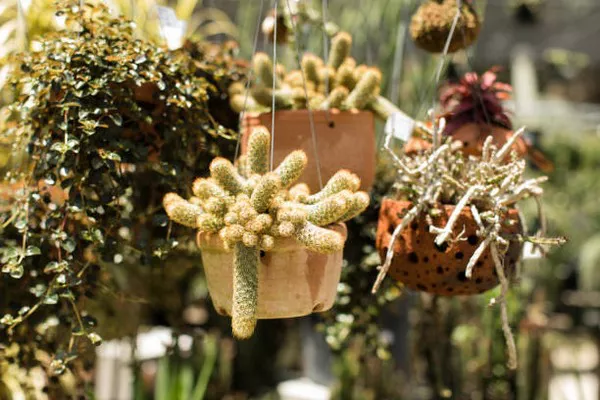Air plants, scientifically known as Tillandsia, are a fascinating genus of plants that belong to the Bromeliaceae family. Unlike traditional plants that grow in soil, air plants are epiphytes, which means they absorb moisture and nutrients through their leaves from the air and rainfall. These unique plants are native to diverse regions, including forests, deserts, and mountains in Central and South America, the southern United States, and the Caribbean.
One of the most remarkable features of air plants is their ability to thrive without soil, making them versatile and adaptable to various environments. They come in a wide array of shapes, sizes, and colors, adding a touch of natural beauty to any space. In addition to their aesthetic appeal, air plants are low-maintenance, making them ideal for both novice and experienced plant enthusiasts.
Popular Types of Air Plants
1. Tillandsia Ionantha:
Tillandsia Ionantha is one of the most popular and widely cultivated air plants due to its compact size and vibrant colors. This species typically features thin, spiky leaves that range from bright green to red, especially during its blooming period. Varieties such as Ionantha Fuego and Ionantha Rubra are sought after for their intense hues and elegant appearance.Care Tips: Ionanthas thrive in bright, indirect light and require good air circulation to prevent rotting. Water them by misting or soaking them in water for 20-30 minutes every week, allowing them to dry completely before placing them back in their display.
2. Tillandsia Xerographica:
Known for its striking appearance and unique silvery-gray foliage, Tillandsia Xerographica is a favorite among air plant enthusiasts. This species forms rosettes of thick, curly leaves that give it a sculptural quality, making it a stunning centerpiece in any arrangement.Care Tips: Xerographicas prefer bright, indirect light and good air circulation. Water them by misting or soaking them in water for 20-30 minutes every 2-3 weeks, ensuring thorough drying to prevent root rot.
3. Tillandsia Bulbosa:
Tillandsia Bulbosa stands out for its unusual bulbous base, which resembles an onion or a bulb. Its long, wiry leaves curl and twist, creating a visually captivating display. This species often produces colorful blooms that add an extra dimension to its aesthetic appeal.Care Tips: Bulbosas thrive in bright, indirect light and appreciate occasional misting or soaking in water for 10-15 minutes every 1-2 weeks. Ensure that water doesn’t accumulate in the bulbous base to prevent rot.
4. Tillandsia Harrisii:
With its charming curly leaves and compact size, Tillandsia Harrisii is a delightful addition to any air plant collection. Its foliage forms tight rosettes, and under optimal conditions, it produces fragrant white flowers that attract pollinators.Care Tips: Harrisii prefers bright, indirect light and good air circulation. Water them by misting or soaking them in water for 15-20 minutes every 1-2 weeks, allowing them to dry thoroughly between waterings.
5. Tillandsia Cyanea:
Commonly known as the pink quill plant, Tillandsia Cyanea stands out for its vibrant pink bracts that resemble flowers. While technically not a true flower, these colorful bracts last for several months, adding a splash of color to any space.Care Tips: Cyaneas prefer bright, indirect light and high humidity. Water them by misting or watering the soil directly, keeping it evenly moist but not waterlogged. Ensure proper drainage to prevent root rot.
Choosing the Right Air Plant
When selecting air plants for your collection, consider factors such as size, light requirements, and care difficulty. Larger species like Xerographicas and Bulbosas make striking focal points, while smaller varieties like Ionanthas are perfect for terrariums or hanging displays. Assess the available light in your space and choose plants that match your lighting conditions, whether it’s bright, indirect light or low light. Additionally, consider the care requirements of each species, as some may need more frequent watering or specific environmental conditions to thrive.
Basic Air Plant Care
Proper care is essential for the health and longevity of air plants. Here are some basic care tips to keep your plants thriving:
1. Watering: Most air plants benefit from regular misting or soaking in water to replenish moisture. Use room temperature water and avoid using water that is too hard or soft, as it can harm the plants. After watering, shake off excess water and allow the plants to dry completely to prevent rotting.
2. Light: Air plants thrive in bright, indirect light, such as near a window or under grow lights. Avoid placing them in direct sunlight, as it can scorch their leaves. If natural light is limited, consider supplementing with artificial lighting to ensure adequate light levels.
3. Air Circulation: Good air circulation is crucial for air plants to prevent moisture buildup and fungal infections. Place them in areas with adequate airflow, such as near a fan or in a well-ventilated room. Avoid placing them in enclosed containers or terrariums without proper ventilation.
4. Fertilization: While air plants can absorb nutrients from the air, occasional fertilization can promote healthy growth and blooming. Use a diluted, water-soluble fertilizer specifically formulated for bromeliads or air plants, and apply it once a month during the growing season.
Conclusion
By understanding the unique characteristics and care requirements of different types of air plants, you can create a diverse and thriving collection that adds beauty and elegance to your indoor environment. With proper care and attention, air plants can bring joy and tranquility to your home or office space for years to come.


